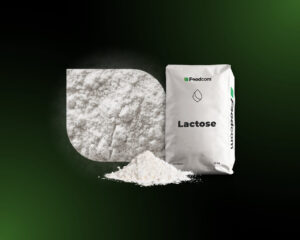- Oversupply of raw materials and weak export demand are putting pressure on prices for milk powder and cheese.
- Butter prices are falling despite a rebound in cream prices, indicating growing caution in the fat market.
- Liquid milk components are highly volatile due to seasonality and the veterinary situation.
- Globally, markets remain divergent, with Australia increasing production, China struggling with milk surpluses and the US maximising processing.
Welcome Partners!
Welcome back to our newsletter!
While the milk powder market remains under pressure due to seasonal oversupply and weak exports, prices for cheeses such as Gouda and Edam are also softening in the face of limited demand and rising stocks. Meanwhile, the fats segment is showing divergence despite a rebound in cream prices, butter values remain weak. Volatility is high in the liquids market, with global factors including overproduction in China, expansion in Australia and processing records in the US underlining the growing uncertainty. Read the full overview of prices, trends and events shaping the European and global dairy market.
Scroll down for detailed market data and forecasts.
Milk powder
The market for skimmed milk powder (SMP) remains under downward pressure as ample supply from the seasonal increase in milk production continues to meet limited demand. In the food segment, European SMP is quoted in a range of 2325-2380 EUR/MT FCA, with some producers willing to negotiate prices below 2325 EUR/MT to sell off older stocks. Export competitiveness is being undermined by unfavourable exchange rates and demand from key import regions remains mixed, particularly in Asia.
Feed SMP is showing similar weakness, trading slightly lower in the 2370-2390 EUR/MT DAP range. Buyers are cautious in their purchasing decisions, guided by ongoing price weakness and moderate spot market availability. Despite relatively stable milk prices in parts of central Europe, continued oversupply means the market remains cautious
Cheese
The European cheese market continues to weaken as summer supply exceeds current demand. Cheeses such as gouda and edam are trading in the 4200-4280 EUR/MT and 4180-4250 EUR/MT ranges respectively. Buyers have largely covered their needs in the short term and there is moderate maturation of stocks across the region. Activity in the spot market is limited – producers are looking for liquidity ahead of a quieter August period.
The export environment remains volatile – currency fluctuations and increasing competition from other regions are negatively impacting on future contracts. Cheddar is also under price pressure due to high production in Ireland and the UK, while mozzarella continues to lose value slightly, influenced by high stocks and weak interest in July deliveries.
Fats
The European butter market is starting to separate from the traditionally related cream segment. Despite a rebound in cream prices in recent sessions, butter values are testing lower levels, with producers offering 25kg blocks of lactic butter at 7150-7250 EUR/MT. Retail prices are trending upwards in some regions, particularly Germany, but wholesale activity remains cautious.
The current divergence suggests that increased supply combined with moderate summer demand is outweighing the supportive cost signals coming from the cream market. Export flows remain erratic and the market is bracing for further volatility over the holiday period.
Liquids
The liquid dairy market remains volatile, particularly in the grocery segment. Cream prices have rebounded to 8600-8800 EUR/MT after an earlier decline, supported by steady demand from seasonal sectors such as ice cream production. However, availability is limited in some regions and prices remain sensitive to weather conditions and fluctuations in milk yields.
Food-grade skimmed milk concentrate (SMC) remains stable, with the German-origin product quoted at 2100-2200 EUR/MT FCA. Although seasonal availability of raw milk is lower, veterinary concerns such as the ongoing blue tongue situation and the emergence of lumpy skin disease (LSD) in Poland may further limit milk supply. Feed concentrate availability remains limited, but demand is also weak, which is currently stabilising prices.
Whey powder
The whey powder market remains quiet, with minimal changes in the price of sweet potato whey (SWP), currently holding at 1000-1050 EUR/MT FCA. Despite stable cheese production providing a steady supply of raw material, weak export demand continues to weigh on market sentiment. Buyers are holding back their decisions, waiting for more favourable conditions or focusing on higher value-added products.
In the feed segment, SWP remains stable in the 800-820 EUR/MT DAP NL range. Activity in the market is limited, with both buyers and sellers showing narrow but persistent price divergence. Some interest in Q4 contracts is emerging, but spot volumes are well secured. Meanwhile, rising sweet whey concentrate (SWC) prices are prompting some producers to abandon production of standard powder, which may limit its availability in the medium term.
What’s new?
Australia
Prime Dairy, the agricultural division of Prime Value Asset Management, has surpassed 10,000 milking cows in its Australian operations, marking a significant milestone in the company’s strategic expansion. Focused on areas with high rainfall and stable access to water, such as Tasmania and south-west Victoria, the company has invested heavily in major infrastructure and herd development. With a portfolio of eleven commercial farms and four ancillary farms, Prime Dairy has achieved a 35% year-on-year increase in milk production, forecasting more than 43 million litres by 2024. The operation is underpinned by efficient irrigation systems, a long-term employment strategy and a robust investment model focused on both revenue and capital growth.
China
China is currently struggling with a persistent oversupply of raw milk, leading to the lowest farmgate prices in a decade. The country’s leading producer, China Modern Dairy Holding, with nearly 230,000 cows, now expects a net loss for the first half of the year of around €100 million, due to falling milk prices and fair value adjustments. Despite efforts to reduce cow numbers and lower unit production costs through optimised feeding, milk yields per cow remain high – averaging 9000-13000 kg – and total milk production continues to rise. However, entrenched oversupply, compounded by weak domestic demand, suggests that low prices are likely to persist through the first half of the year.
US
US dairy producers reached new records in April, with cheese and butter production operating at full capacity amid strong milk availability. US cheese production increased by 6.1% year-on-year – the largest increase among the major categories – while butter production rose by 3.9%, supported by a 1.6% increase in total milk production. Whey protein concentrate production rebounded to more than 42 million pounds, the first increase since early 2025. This rich surplus has allowed processors to maximise capacity utilisation, which has translated into increased production. Nevertheless, limited whey stocks and favourable price differentials between the domestic and European markets point to continued export opportunities. This growth trajectory underlines the industry’s renewed confidence on the threshold of summer.
![Dairy market in seasonal congestion – low activity and rising stocks [275th Edition of DAIRY Newsletter] Dairy market in seasonal congestion – low activity and rising stocks [275th Edition of DAIRY Newsletter]](https://foodcom.pl/wp-content/uploads/2024/06/Foodcom_SA_Dairy_Newsletter_4-1520x760.jpg)






